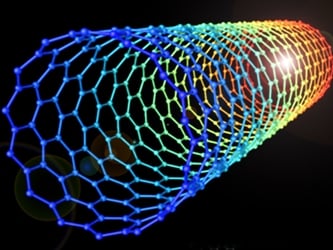Nanotechnology and plastics: a firm commitment for the future

Although the concept of nanotechnology was introduced for the first time by the Nobel Prize for Physics Richard Feynman in 1959, its use when developing new plastic materials is fairly recent. Since these little particles — of the same size as a virus― began to be used at the end of the 90’s until now, so many efforts have been developed, both in a basic and in an applied R&D levels and we have a huge number of products available in the market that use them. Through nanotechnology it is possible manufacturing plastics that overcome the limitations inherent in this material and getting electricity conductor plastics resistant to fire, scratches and solar radiation, with bactericide and fungal properties, superhydrophobic or anti-odour, among other.
The potential perceived to nanotechnology has led to state that the next Industrial Revolution is coming in the 21st century. Both United States and the European Union and Japan lead the developments in this field and invest in ambitious R&D programs that —in the case of European Union— represent a quarter of the global investment. The report “Horizon 2020: Key Enabling Technologies (KETs), Booster for European Leadership in the Manufacturing Sector”, commissioned by the European Parliament, has just been published and there we can find a definition of nanotechnology as one of the six key technologies to aim that the European industry keeps being competitive and capable to give answers both in social and future challenges through radical innovations in fields such as the health care, the energy, the environment and the industrial manufacture.
In 2010 and thanks to the Nobel Prize awarded to the physicists Andre Geim and Konstantin Novoselov from the University of Manchester, a new material, the graphene, has come to revolutionize the field of nanotechnology. The European Union has set off the initiative Graphene Flagship, with a budget of 1 billion of euros, to introduce the graphene from the laboratories to the industry within 10 years. It is the greatest collaboration research initiative set off by the European Commission and it will coordinate the efforts of the whole value chain, from the production of materials to the manufacture of compounds and the integration of systems in order to exploit the unique properties that this material presents.
In Spain there are so many research groups, technology centres and companies who are working with nanotechnology from more than a decade ago. The last available information from 2012 sets in 96 the companies that work in this field. Concerning to the return got in the Seventh Framework Programme, in the field of nanotechnology, materials and production (NMP), Spain occupies an admirable 4th position. These figures allow us to look to the future with optimism, but the number of companies that have explored this way in order to differentiate their products is still small. It is an investment in the future and it is not exempt of risks, but there is investment to support it and a valuable experience in R&D centres that we must take advantage of in order to not lag behind and keep competing in equal conditions as our European homologous.